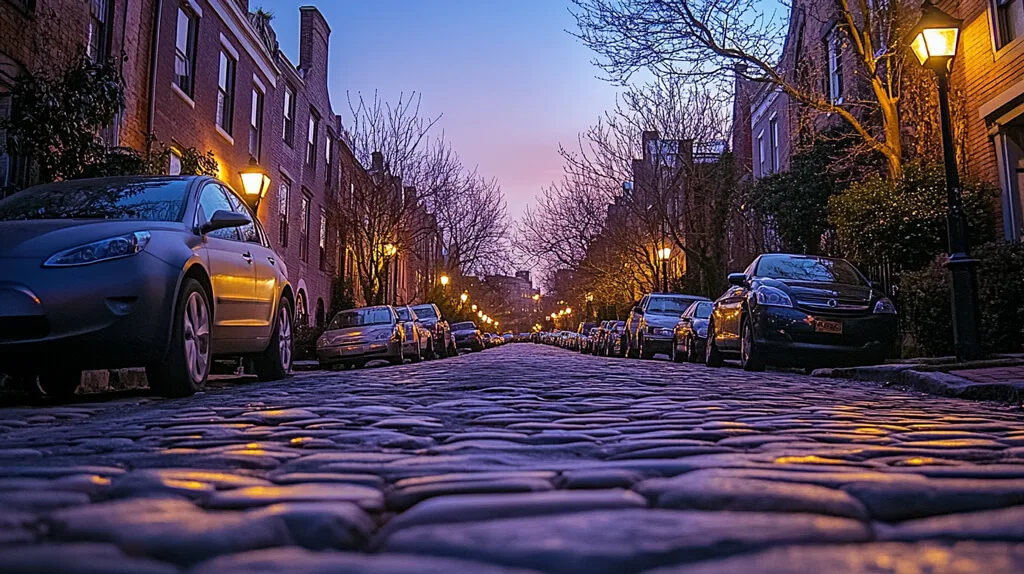
Conventional EV charging deployments—standalone posts or parking lot stations—are ill-suited to historic neighborhoods. Installing these requires significant electrical upgrades, often involving new transformers or expanded grid connections. In areas where underground utilities are century-old, this can mean disruptive construction, lengthy permitting processes, and high costs. Moreover, preservation committees frequently reject such projects to protect historic integrity, citing concerns over “street clutter” or mismatched designs.
For example, a standalone charger might require digging up a cobblestone street—a nonstarter in many districts. Even if approved, the modern, utilitarian look of these stations can feel jarring next to Victorian lamp posts or Georgian facades. The result? A gap in charging access that leaves residents and visitors reliant on distant stations, undermining EV convenience and adoption.
Enter lamp post charging, an innovative approach that transforms existing street lights into Street Lamp Charging Poles. This solution leverages the ubiquitous presence of lamp posts—already wired into the grid—to deliver EV charging without extensive new infrastructure. It’s a win-win: cities meet modern demands while preserving historic charm.
Most street lights draw power from the existing electrical grid, making them ideal candidates for retrofitting. A Lamp Post Charging Station adds a charging module to the lamp post base, equipped with a standard EV cable port. Smart technology adjusts power delivery to match grid capacity, ensuring stability. For instance, a Charging Lamp Pole might offer 7 kW—enough for overnight charging—while scaling back during peak demand.
In London, ubitricity has converted over 1,000 lamp posts into City Lamp Charging Stations, proving the concept’s feasibility. This approach sidesteps the limitations of traditional chargers, offering a practical, elegant solution for historic areas.
Real-world examples underscore the effectiveness of lamp post charging in historic neighborhoods.
Known for its antebellum architecture, Charleston faced a charging conundrum. Local officials partnered with a tech firm to install Lamp Pole Charging Stations downtown, using existing lamp posts to avoid new construction. The project sailed through preservation reviews, delivering charging access with zero impact on the historic streetscape. Residents and tourists now enjoy convenient EV options, boosting local sustainability efforts.
Amsterdam’s canal-lined streets and historic buildings make traditional chargers impractical. ChargePoint introduced hundreds of Street Light Chargers, integrating them into the city’s iconic lamp posts. Data from ChargePoint shows a 15% uptick in EV adoption since the rollout, demonstrating the solution’s impact on user behavior.
These cases highlight how lamp post charging bridges the gap between heritage and innovation, offering a replicable model for other cities.
While promising, lamp post charging requires careful planning. Key considerations include:
Street lights typically power a single bulb, not a 7 kW charger. However, smart charging technology mitigates this by dynamically managing power draw. A Charging Lamp Pole from Voltpost, for example, adjusts output based on grid availability, preventing overloads. In areas with severely limited capacity, cities may need minor grid upgrades—still less invasive than new stations.
Unlike traditional chargers, lamp post conversions are quick and non-disruptive. Technicians attach a charging module to the lamp post base and connect it to the existing power line, often in hours. This minimizes street closures and preservation conflicts, keeping costs low.
As Smart City Pole Charger solution provider, we offers you:
Preservation is paramount in historic neighborhoods, where residents and societies guard against visual discord. Street Lamp Charging Poles excel here. Their discreet design—often a small port or light indicator—mimics the original lamp post, avoiding the “modern eyesore” critique. In Savannah, Georgia, chargers feature vintage-style housings that echo 19th-century designs, earning approval from preservationists.
By repurposing existing structures, this solution eliminates the need for new posts, maintaining uncluttered streetscapes—a critical factor in historic districts.
Lamp post charging’s potential extends beyond historic areas. With millions of street lights globally, it could form the backbone of urban EV networks. Imagine City Lamp Charging Stations dotting every corner, accessible to all EV drivers. In the U.S., retrofitting even 10% of the 26 million street lights could create a transformative charging grid, accelerating the shift to electric mobility.
This approach also sets a precedent for urban innovation, showing how existing assets can meet new challenges—a blueprint for sustainability worldwide.

私達は詳しい技術情報および引用語句をあなたに送ります!